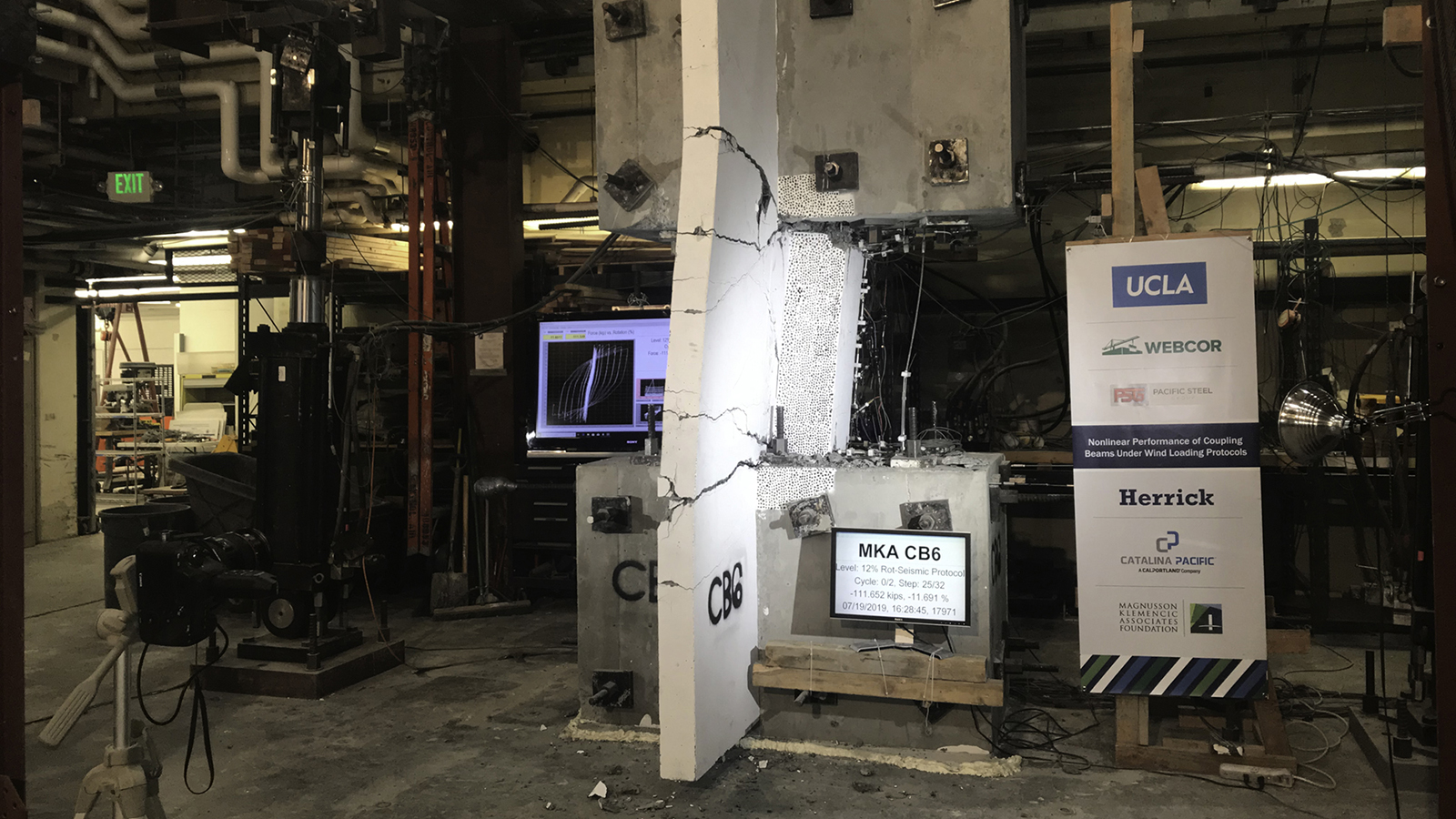

Evaluation of the Performance of Concrete Coupling Beams Subjected to Inelastic Demands Under Wind Loading
Understanding the behavior of structural elements subjected to extreme wind loading is key to the advancement of Performance-Based Wind Design. This project provides experimental testing of concrete link beams with non-seismic detailing when exposed to a large number of mildly-inelastic load cycles. The load cycles, intended to simulate coupling beam response under hurricane loads or other extreme winds, are developed based on wind tunnel test data. Additionally, the research explores alternative loading protocols and potential design enhancements that improve the post-elastic behavior of non-seismically detailed coupling beams.
“Structures subjected to seismic demands have long been permitted to yield under extreme loads, which provides reliable energy dissipation while simultaneously resulting in economical building designs. The same is not true for wind design, which has historically been limited to the realm of linear elastic design. This research will provide test data (for example, nonlinear backbone curves and cyclic modeling parameters, similar to those used in seismic design), which will be used by practicing structural engineers who wish to perform nonlinear wind analysis for tall concrete coupled shear wall buildings, especially those occurring in high wind environments.” — Prof. John Wallace
The final report for this research is linked below. The following paper has been published on this work.
Abdullah, S.A., Aswegan, K., Jaberansari, S., Klemencic, R., & Wallace, J.W. (2020). Performance of Reinforced Concrete Coupling Beams Subjected to Simulated Wind Loading. ACI Structural Journal, 117(3), 283-295.
PROJECT DATA
CONTRACT NUMBER:
RGA A102
RESEARCH TITLE:
Evaluation of the Performance of Concrete Coupling Beams Subjected to Inelastic Demands Under Wind Loading
RESEARCH CATEGORY:
Performance-Based Wind Engineering
Location:
University of California, Los Angeles
Principal investigators:
Prof. John W. Wallace, with Saman Abdullah
MKA CONTRIBUTORS:
Kevin Aswegan, PE, SE
Ron Klemencic, PE, SE, Hon. AIA
Industry Partners:
Webcor
Pacific Steel Group (PSG)
Herrick
CalPortland
STATUS:
Research Completed August 2019
Final Report Provided May 2020
PROJECT RELATED LINKS AND DOWNLOADS
RELATED FOUNDATION RESEARCH:


